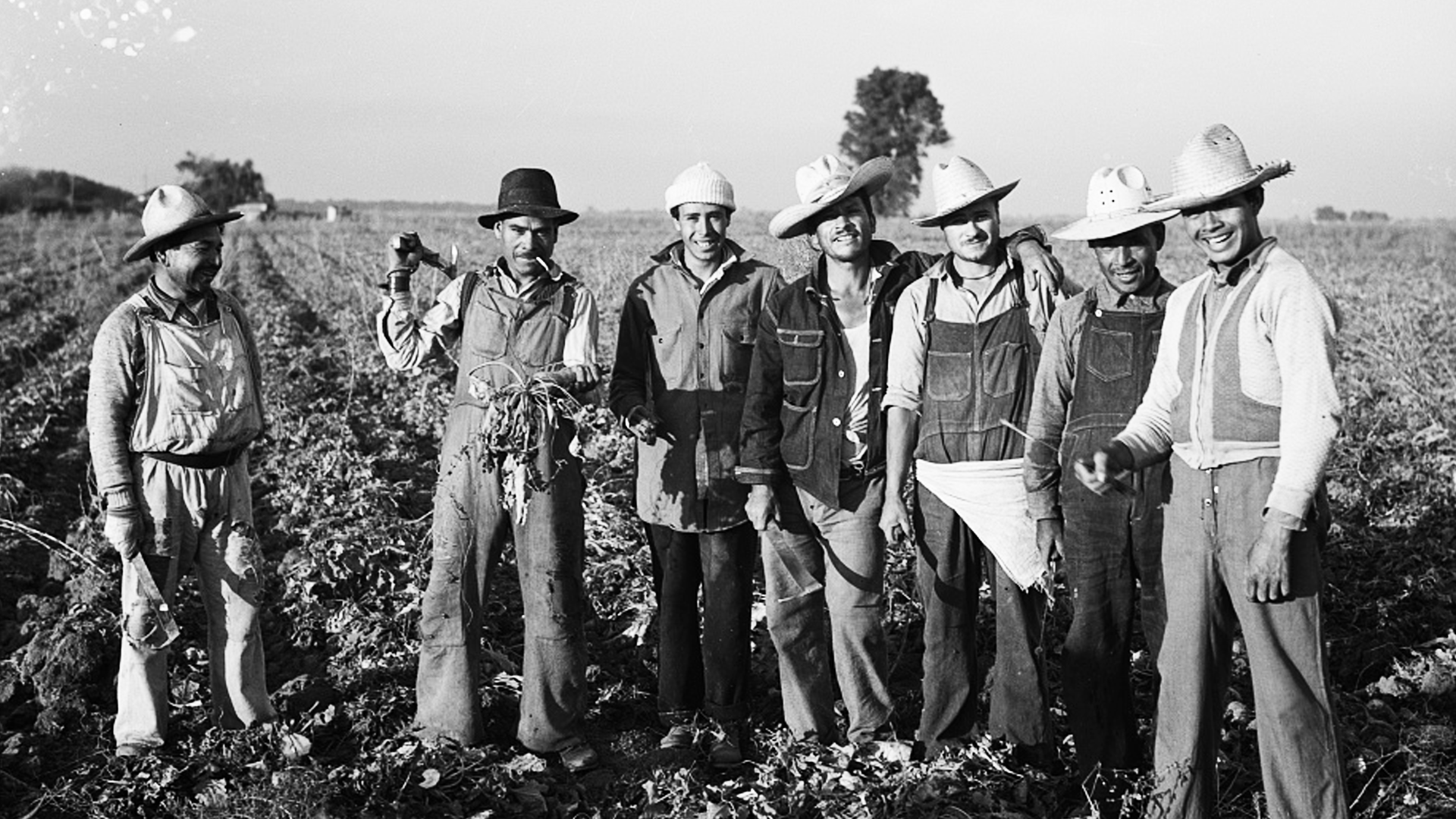U.S. and Mexico Sign the Bracero Program Agreement

Mexican braceros standing in line with luggage at a U.S. processing center during the 1940s.
What Happened?
With American workers off fighting in World War II, U.S. farms faced a critical labor shortage. In response, the U.S. and Mexico signed the Mexican Farm Labor Agreement on August 4, 1942, launching the Bracero Program. 'Bracero' comes from the Spanish word for 'arm,' reflecting the manual labor these men provided—mostly in agriculture and railroad work.
On paper, the program promised decent wages, fair housing, and protection from discrimination. In reality, braceros were underpaid, overcrowded, exposed to harmful chemicals, and routinely mistreated. Food was meager, wages were often stolen, and many laborers never received the retirement funds promised to them.
Over 4.6 million contracts were issued over 22 years. The program helped feed the nation and boosted remittances to Mexican families—but also entrenched a system of racialized, disposable labor. While some braceros returned home, many stayed, forming the roots of immigrant communities that still thrive today.
The Bracero Program ended in 1964, but its legacy lives on. It gave rise to a generation of workers who would fuel labor activism—including Cesar Chavez and the United Farm Workers. It also shaped the political and social tensions around immigration that continue to dominate headlines. Behind the label on your produce lies a history of arms, sweat, and struggle.
Why It Matters
The Bracero Program didn’t just import labor—it exposed the deep contradictions between American ideals and economic practices. It reveals how migrant workers have long been essential to U.S. agriculture, even as they are marginalized and mistreated. The story of the braceros is one of resilience and resistance—a story that connects past to present, and farm fields to fights for justice.
?
What were the goals and promises of the Bracero Program—and how often were they broken?
How did the Bracero Program shape immigration patterns and labor systems in the United States?
What were the conditions like for bracero workers—and how did they respond to exploitation?
How did the Bracero Program influence later labor movements like the United Farm Workers?
What lessons does the Bracero Program offer for today’s immigration and labor policy debates?
Dig Deeper
Temporary workers from Mexico fill huge labor shortages created by World War II and become part of the continuing debate about immigration.
Related

The Columbian Exchange: When Worlds Collided
When two previously isolated worlds collided in 1492, the resulting biological, cultural, and economic transformation reshaped every corner of the globe. The Columbian Exchange was not just a swap—it was a world-changing, world-breaking chain reaction.

Westward Expansion, Sectionalism, and the Road to Civil War
Manifest Destiny fueled territorial growth, but it also deepened sectional divides—turning political disagreements over slavery and states’ rights into irreconcilable conflicts that led to civil war.

The New Deal: Fighting Depression with Bold Ideas
Faced with economic collapse, President Franklin D. Roosevelt launched a revolutionary plan to rebuild America from the ground up. The New Deal wasn’t just policy—it was a bold experiment in hope, action, and government responsibility.
Further Reading
Stay curious!
